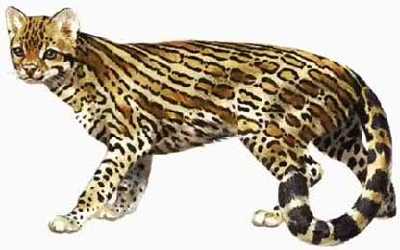 SKC Films Library SKC Films Library |
| SKC Films Library >> Science >> Geology >> Paleontogy |
| Pseudaelurus [soo' dA lor' us] ancestor of today's cats
Approximately twelve species of Pseudaelurus once roamed the plains of Eurasia, Africa, and North America between 20 and 8 million years ago. All of them looked much like modern cats except for having shorter "hand" and "foot" bones, hind limbs longer than forelimbs, and a long, flexible back. The smallest species was about the size of a modern house cat, the largest about the size of a modern cougar (about 5 feet long and 50 pounds). The first cat to immigrate into the Americas (which it did via the land bridge across the Bering Sea during the early Miocene), Pseudaelurus gave rise to the saber-toothed cats known as Smilodon. It is also believed to be the ancestor of all modern cats, including the domestic house cat. Pseudaelurus ("false cat") was named by French zoologist Paul Gervais in 1850, who based the designation on a single mandible that had been described over a decade earlier by another Frenchman, Edouard Lartet, who thought it resembled that of the modern hyena. SOURCE |
| SKC Films Library
>> Science >> Geology >> Paleontology This page was last updated on 06/22/2017. |
